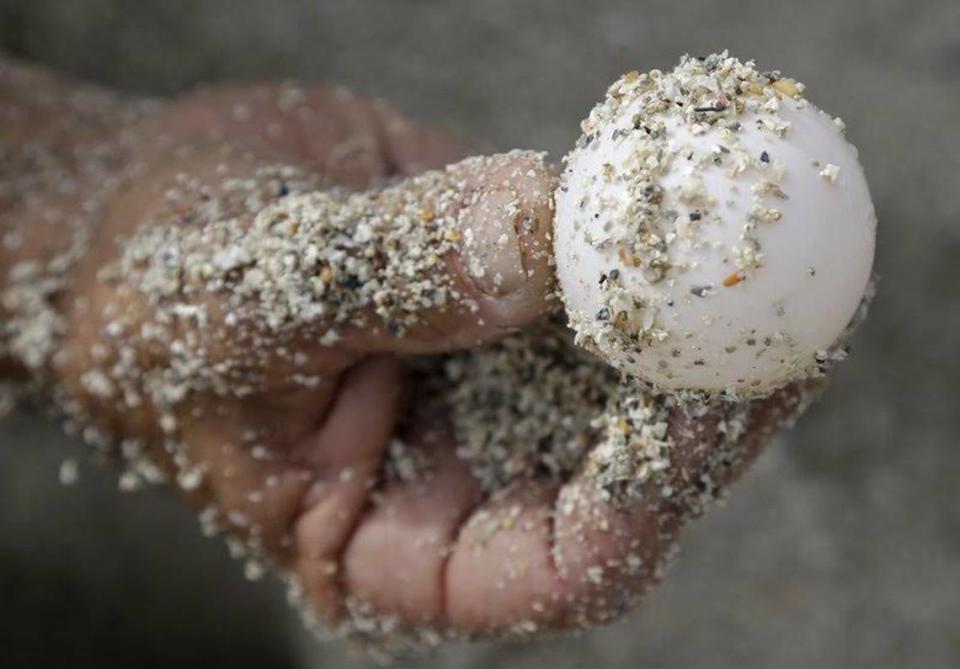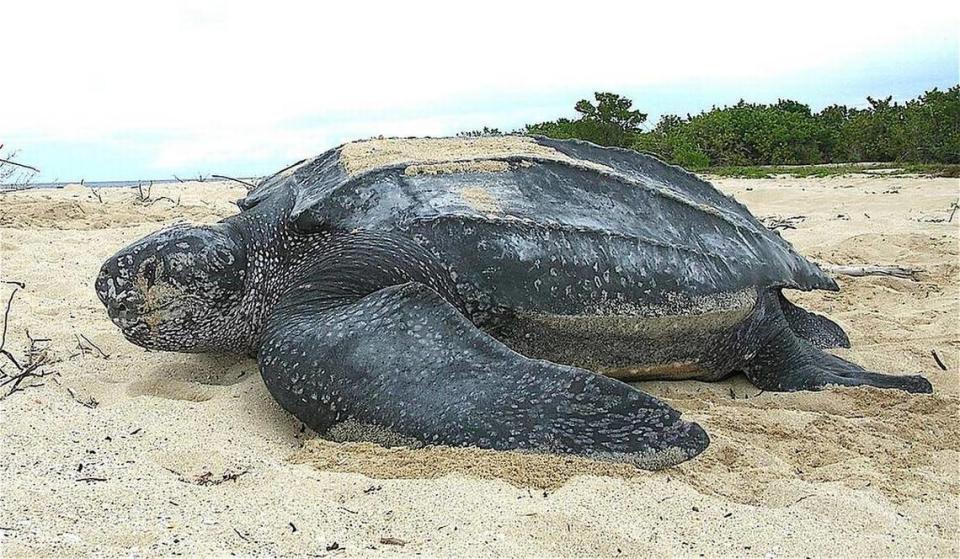For suspected poachers, Florida’s strong sea turtle nesting season made for easy picking
Wildlife agents say it took less than 40 minutes for Bruce Wayne Bivins to find a full nest on Singer Island, transfer 93 soft-shelled, round eggs to a black duffel bag and carry them over the dunes to Highway A1A, where a partner was waiting in a getaway truck. It was the eve of Memorial Day and turtle nesting activity was in full swing.
The men were hoping to sell the poached turtle eggs, estimated to be worth around $370 in the black market, according to a criminal complaint filed this week. But wildlife conservation law enforcement agents were watching their every step.
Bivins and partner Carl Lawrence Cobb, both 63, now face federal charges of criminal conspiracy to violate a law that prohibits the sale of protected wildlife and with violating the Endangered Species Act, which protects sea turtles and their eggs. If convicted, the men face up to 10 years in prison, according to the criminal complaint. Bivins, who had previously been arrested for collecting turtle eggs, told agents they were for personal consumption, the complaint said.
The eggs, likely laid by a threatened loggerhead, are nothing short of a miracle: Sea turtles are among the most threatened animals on earth, under pressure primarily from the severe loss of nesting habitats around the world. During their long journeys at sea to mate and nest, sea turtles risk being killed by overfishing, pollution and marine debris. Though conservation efforts in places like Florida have improved population numbers over the past couple of decades, the average chance of survival to adulthood is still around 1 percent or less.
“Poaching is quite rare in Florida but we still hear about one or two cases every year,” said Justin Perrault, director of research at Loggerhead Marine Center in Juno Beach, just a few miles north of where the alleged poachers were arrested. “It’s not among the top threats to their survival, but it’s still considered a serious crime because sea turtles are protected by state and federal laws.”

At most beaches in South Florida an army of volunteers helps turtle conservation groups count nests and patrol the long stretches of sand where females come out between March and October to lay thousands of eggs. They mark nests based on the mother’s tracks on the sand, identify species and monitor hatching activity. In some areas like Juno Beach, citizen turtle patrols work at night, monitoring nesting and watching out for disturbances and potential criminal activity, Perrault said.
But that’s not the case on Singer Island, in Riviera Beach. And during this year’s Memorial Day weekend, the beach may have been even more deserted because of sweeping stay-at-home orders that were still in effect to slow the spread of the coronavirus.
According to the criminal complaint, Cobb was driving a green pickup truck and dropped off Bivins near the beach on the night of May 24. Florida Fish and Wildlife Conservation Commission investigators saw that Bivins was carrying a long stick and an empty black bag, and alerted two FWC officers who were patrolling the beach on foot.
“While walking on the beach, Bivins was probing and digging in the sand,” and was seen “placing his hands in and out of the dark-colored bag.” After a few minutes FWC officers saw him walking away with the bag, which now looked heavy, the complaint said. The recovered eggs were reburied by an FWC biologist.
Edward Reagan, the attorney for Bivins, said his client had no comments other than his statements to law enforcement agents at the time of his arrest that he took the eggs for personal consumption. Brian Mallonee, Cobb’s defense attorney, didn’t immediately reply to a request for comment.
This year’s successful nesting season probably made it easy for the alleged digger to quickly find a full nest. Nest counts have been higher than in previous years among the three main species that nest in South Florida — the green turtle, the leatherback and the loggerhead. The Loggerhead Marine Center has counted nearly 14,000 nests in the 9.5 miles it monitors since the start of the season in late February. Last year, the organization counted over 20,000 nests during the entire season.

In Florida, sea turtle nesting activity has seen some ups and downs over the past few years, with an uptick since 2010 in the numbers of loggerheads, the species with the most nests in South Florida. Overall, nest counts recovered significantly from the lows of the ‘80s and ‘90s, a result of conservation efforts in more densely populated areas like Palm Beach.
Protections range from inclusion in the federal Endangered Species List and laws requiring turtle drowning prevention devices for nets on commercial fishing vessels, to state laws protecting turtles from harassment, as well as local beach lighting and seawall setback ordinances to keep beaches dark and accessible for female nesting turtles.

